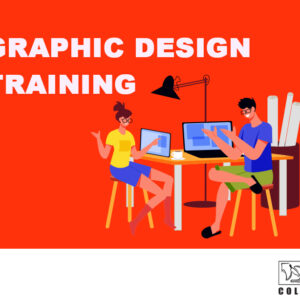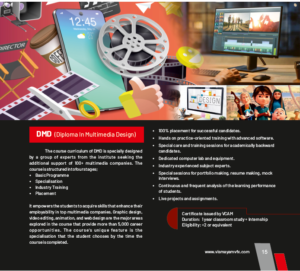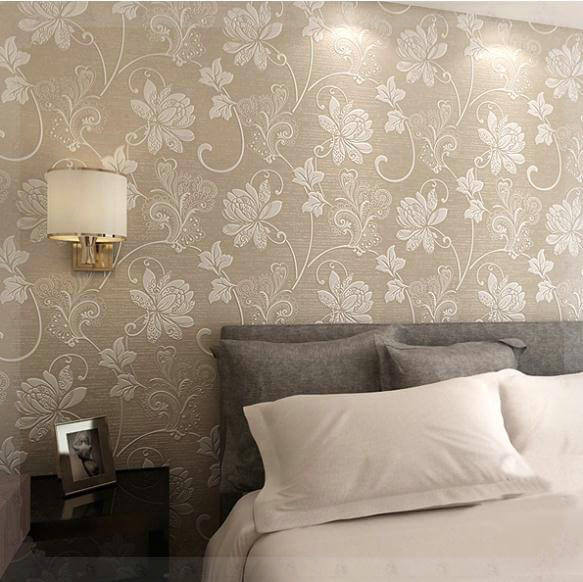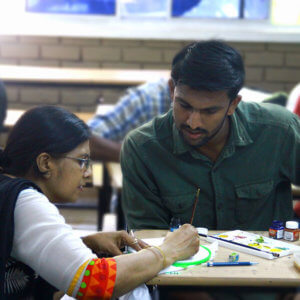
Login
X
- Home
- Courses
- Graduation
- Diploma Certificate
- Professional Diploma
- Special sessions / Aptitude boost up
- News & Events
- Student zone
- Placement
- Gallery
- FAQ
- Contact Us

Professional graphic designers who specialise in logo design develop distinctive and personalised brand graphics for the person or business that hired them. A logo designer may operate independently, be employed full-time by a design company or advertising agency, or be employed on a temporary basis. The majority of professional logo designers have a graphic design college degree and occasionally have marketing and advertising expertise.
Designers must be able to fully immerse themselves in the field of their clients. This could entail doing extensive research on a certain product or digging deep into the particulars of how the company offers its services. To create a logo that will set the client’s company apart from the competition, extensive market and competitor research is required. A branding questionnaire or briefing meeting is the best resource a skilled logo designer can have.
Inexperienced logo designers frequently become distracted by the desire to examine the specifics of a company logo. But the most talented designers will be able to conceptualise. A designer should compile and evaluate all of the information provided regarding preferred colour and font choices, logo styles, and prospective company names or slogans while having the branding questionnaire and creative briefing notes at the ready. A first logo sketch can be created by a designer thanks to their ability to see the wider picture. The finest designers will use font libraries, mood boards, and colour wheels to be ready for the first draught. At this point, it is important to examine every possible design idea.
To think logically and strategically, great logo designers need to be able to conceive conceptually. The fact that clients will use their logo for all of their marketing endeavours must be considered by designers. Logos need to be flexible enough to use on websites, social media platforms, print ads, and promotional items. To get a better idea of how the final logo design should seem, ask the client how they want to sell their new brand.
Inexperienced logo designers frequently place an undue emphasis on their notes from the creative briefing or the responses they wrote in the branding questionnaire. It’s crucial to be adaptable and accommodating to client requests and last-minute changes. Great logo designers should also feel comfortable explaining the complexities of the design industry to their clients.
In order to be successful in the logo design business, a designer must be able to effectively explain the concept of design to a customer, accept constructive criticism of their work, provide inventive solutions to a problem, and work toward compromises on the design.

After finishing your graphic design training in India, the next step is to complete an internship. You’ll soon realize how things work differs from how you’ve been taught. As a result, after extensive instruction, you’ll learn how to handle real-world circumstances. One of the best periods for a new employee to engage in creative work is now. You’ll learn how to use your skills to benefit a business and how to do so. If you’re taking a graphic design training course, you must do an internship.
Whether you completed a lengthy diploma programme or a brief graphic design training certificate programme, you will need sufficient practice and real-world experience if your goal is ambitious. You are strongly encouraged to enrol in an internship before you begin freelancing, and this will improve your technical abilities and promote active engagement in various projects encouraging creative thought.
An internship allows you to contact other working colleagues to share ideas and discuss thoughts instead of working alone. Trainers or seniors continually review your work, and you are advised to improve, get started, concentrate on details, and enhance design aesthetics until completion.
Internships allow you to experience the difficulties that your autonomous professional profile will provide. To obtain something futuristic, relevant, and creative, initiatives will put your head and shoulders above the competition.
Internships when applying for a junior designer position, give your resume or certificate one more star because reputable companies are looking for more qualified applicants who are curious and intelligent employees. It would help if you did what your seniors or mentors instructed you to do as an intern. Additionally, the primary task begins once a customer meeting is over and a new project begins.
You will be working on various projects, and with each project, you will have the opportunity to improve the skills you need, learn how to create a balanced design, and do a lot more. Once you begin working as an intern, you gain information and experience, but persistence is necessary to succeed in this field.
Relationships are crucial for a successful job. But how can you be sure that you have solid connections nearby? The simple solution is the internship. At every step of their careers, they meet new people in addition to learning new things about the skills of your employees.

‘Visual effects’ has become a catch-all phrase. When individuals use this term, they could be referring to invisible effects, which are CG scenes in which the audience isn’t supposed to detect that they’re digital, or digital doubles, which are perfect computer recreations of actual actors. They could also refer to the screen depiction of magic, superpowers, and other elements frequently featured in popular TV and film productions. A VFX artist’s work in the post-production process blends VFX creativity with cutting-edge technological competence, bringing the producers’ or directors’ ideas to life and leaving the end viewer feeling that what they see on screen is real.
VFX is the linking of real-life film that appears sensible but would be dangerous, expensive, impractical, tedious, or difficult to capture on film. Today, visual effects (VFX) are heavily used in almost every movie. VFX creativity is crucial for any program or film based in a fantasy world with mythological animals and magical beings, communicating the fanciful in place of descriptive words.
Thinking about how an effect would react to Earth physics, how a particular character may project their magic or superpower to match their personality, and how we, as artists, make the effect credible are all critical factors when creating our VFX creativity effects. Taking a line from a script and talking with directors, and breathing life into something that improves a production’s visual tapestry is a skill.
There are numerous reasons why you want to work in Visual Effects, and many career routes are available across multiple industries. Creating visual effects is time-consuming, challenging, and highly complex. Because teams are broad and diverse, there are chances for many types of people, from hardcore coders to illustrators and non-artists, who enjoy leading teams. Everyone contributes significantly to the final visual effects. In visual effects, virtual assets are required to match real-world items or to generate new ones that do not exist or are too expensive to develop in the actual world. Modeling artists, texture painters, shader developers, and riggers are generally responsible for creating these.
Whatever technique you select for learning, the most important thing is to begin. It’s as simple as that. Pick up a book, start drawing, watch and analyze a movie, watch visual effects documentaries, and go to local events. Get started. If you don’t have the enthusiasm and motivation for it, no matter how brilliant your education is, you will never succeed.

VFX is one of the world’s fastest-growing industries, and graphic designers are gradually moving toward 3D animation and modeling. A vast number of opportunities in the VFX industry are awaiting students. In light of this, companies like Adobe have released many applications and software on VFX. After all, a career in VFX would need you to reach your full potential. The industry is rapidly expanding and offers numerous career opportunities in the VFX industry.
So, let’s take look at the exciting career opportunities in the VFX industry:
A VFX artist is someone who is in charge of developing visual effects. VFX artists are not confined to the movie industry; VFX is used in various industries. For example, the gaming industry primarily relies on visual effects, and the film relies heavily on newly created technologies such as VFX and CGI. VFX is also utilized by modelers, texture artists, Previsualists, and others. Visual effects, or VFX, is a catch-all word for several firms.
Modelers create 3D objects, people, and surroundings to bring a scene or image to life on screen. You’ll need to be able to model practically anything because your projects will vary. Models must be extraordinarily adaptable and talented.
Riggers build the character’s skeleton from a model to be animated and manipulated on screen. You’ll be the go-between for the modeler and the animator, guaranteeing that the latter can produce realistically moving pictures based on the model.
Concept artists take a brief from a customer or a supervisor and turn it into something that can be seen on screen. They direct the remaining pipeline artists as they work on the film.
It is handed over to a 3D animator, who brings a character and an object to life! Because this is a demanding profession, some studios divide the types of animation into separate roles, such as junior animators, assistant animators, stop motion animators, and so on.
After the models are constructed, texture artists apply various shaders to the mesh. This is the fundamental structural build of any simple 3D model. It is a time-consuming technique in which the artists employ realistic photographs to create the screen. You can utilize time and talent to create a practical result and a piece of art.

Vismayam College of Arts and Media offers a comprehensive multimedia experience to enhance multimedia competencies in students through short terms courses in multimedia. Vismayam is one of the best universities that provide short-term multimedia courses to students who desire to pursue a successful career in the media. The multimedia program seeks to equip students with the art and abilities required to work as qualified professionals in the multimedia business.
Vismayam College provides professional faculty members, expert sessions, workshops, and hands-on projects to give you comprehensive business knowledge. Vismayam also offers 100% placement assistance to students. Students get several opportunities to engage in real-world projects and interact with industry professionals, earning vital experience only the field of work can provide. Students can gain expertise in media-related programs that will prepare them for various jobs in the media sector.
So, let’s take a look at the vismayam college of art & media – short-term courses in multimedia

Within a year, you can become a multimedia specialist. Graphic design, video editing, animation, and web design are just a handful of the fields with over 50,000 job openings. The distinctive element of this course is that you can specialize in one of several sectors in which you excel. After one year of multimedia education, you will receive a three-month internship and a fantastic placement.

Professional Diploma in Multimedia and animation is a diploma program available to students interested in animation and its applications in several industries, such as cartoons, 3D/4D movies, etc. The course’s goal is to provide qualifying students with fundamental knowledge of animation and multimedia and their applications in the real world. Students who have completed Class 12 from a recognized board are eligible to enroll for admission to the Diploma in Animation and Multimedia course.
The Executive Diploma in multimedia animation course is designed to transform students into animation professionals with talents such as creativity, visualization, storytelling ability, and superior technical knowledge, allowing them to pursue a satisfying career in the area. This diploma program will help creative and artistic candidates. The course curriculum includes theoretical and practical ideas in Graphic Design and Multimedia, Video Editing, and Audio Editing.

When Pantone announced Ultraviolet as its color for this year, the industry had a fair idea what to expect in the interior design trends in 2018. The style statements in design are extended to all related fields such as fashion design and product design. The year 2018 has witnessed interesting symphonies of unsuspecting elements to add the spark in interiors and the results have been pretty impressive. Here is what you will come across in social media this year!
Hectic schedules have deprived people of soothing moments in their daily lives. This has led to a desire of subtle decoration of master bedrooms. Minimalism rules when it comes to decorating bedrooms this year. Neutral shades and calmer tones help in soothing down the occupant and minimalism ensures a cluster free environment for a peaceful sleep.
The stainless steel and wooden tone cabinets have started giving way to their slightly colorful counterparts. Of course, a white kitchen is classic but people now want their kitchens to be livelier and more in sync with their individual choices.
The use of wood in flooring and furniture can never be replaced. What this year brings to it is change of preferences. Instead of plain strip locks, herringbone patterns have emerged to be a common wooden feature. The warmth and elegance of wooden shades have been extensively used in imparting a rich interior look.
A bathroom these days is a get-away sanctuary- spa-like features add element of luxury and comfort where in a person can relax and seek serene surroundings. Organic touch ups in the form of wooden elements and natural stones along with a sprinkle of greenery here and there, takes bathrooms a few notches up.
Limited textures are trending. What could be more appealing than a touch of nature? Popular fashion and fabric patterns denote a constant presence of floral imprints, mimicking the 70’s. The difference here is the limited use in the interiors, such as in wallpapers and bed linens. The use is restrained and yet experimental.

While 2017 did see some statement colors making rounds in premium interiors, 2018 is more about popping colors and it gets only bolder- it happily accommodates gold and metallic hues. This does increase the work of an interior designer since it calls for clever combinations that stay easy on the eyes and continue to delight the occupant.
This year the focus is on vintage pieces- of lighting, furniture, curios, accessories and even flower pots. Yes, you heard that right. This is THE year when you should not hesitate to splurge a handsome amount on that antique furniture you have been longing for since eternity! These elements add a defining value to an interior and end up outlining the style quotient of the spaces they occupy.
Each year ushers in a new dawn of fashion and design specifications. It is important to understand that these ‘rules’ are a simple description of what’s hot and happening in interior design arena, specially defined for trend-seekers. However, the ultimate value of an interior is in the way it reflects the aesthetic tastes of the owner, some of whom eventually become trend-setters.

In our previous posts on interior designing course, we discussed on different aspects of the courses and colleges like things to consider when choosing an interior designing course or college, must have features of an interior designing college, and top reasons for why you should take interior designing as your career choice. You can check these posts in our blog. In this article we deal with some steps to become a successful interior designer.
We will discuss about five major steps to shine as a leading interior designer. They are; 1) getting a degree in interior designing course, 2) having strong practical knowledge in the field, 3) building a strong portfolio, 4) finding a job, and 5) growing your network. Before moving to the steps, let’s look who can study an interior designing course and become an interior designer.
Interior designing course deals with the studies on designing the interior of living and working spaces. There will be many areas of specialization in an interior designing course. If you have been appreciated for arranging your room or designing a space with right furniture, colours, and lightings then a career in interior designing can be right for you.
Studying an interior designing course requires creativity, imagination, an artistic approach to the things, communication skills, coordination and management abilities, and business and marketing skills. Originality of ideas and innovations in designs are two critical factors if you really want to shine in the profession. If you are confident of these skills and abilities, then you can definitely pursue an interior designing course and become a successful interior designer.
Five steps to become an interior designer
Thought a formal education is not a must, most of the top interior design firms hire people who have a bachelors or master degree in interior design. A degree in the specific field is preferred. Interior designing course is offered by numerous reputed institutions all over India.
Students who have passed or about to appear in the qualifying Plus Two standard (Higher Secondary) exam are eligible to take up an interior designing course. So, in order to increase your chances of being recruited by the top companies, make sure you take formal education.
Just studying an interior designing course is not enough to become a successful interior designer. While interior design is a field of fierce and intense competition, having a strong practical knowledge is a must to shine and even exist in the field.
Though an interior designing course will help you enhance your skills and abilities and learn all the theoretical concepts, make sure you also learn to transform that theoretical knowledge into practice. Working on projects, getting internships in big companies and volunteering for different organizations during the course will help to increase your practical skill.
Displaying high-quality examples of your works and projects compiled in a professional, well-organized portfolio will be crucial to starting your career as an interior designer. In your interior designing course you will get guidance from your instructors on creating a nice portfolio.
A well-built portfolio will not only help top employers to see the quality of your work and projects you completed but will also give you a chance to show off your creative skills and abilities. Make sure that you keep quality photographs of all of your works and projects to compile them in your portfolio.
Having a strong portfolio in your hand, now it is the turn to find a right job. As we mentioned, holding a degree in interior designing course alone will not help you find a job in the field. Currently there is a need for 100000 interior designers in India alone. The industry is growing at a rate of 20% and is expected to do so until 2018. So, you just need to knock the door until it opens.
Competition is high, so a high paying, professional job may not be easy to find. Start with small projects. If you are skilled, bigger one will come in your way. Again we say, just study of interior designing course will not bring you the job.
This is very important for the success in your career as an interior designer. While the college where you study interior designing course gives you knowledge, strength of your network gives you projects and brings you money. While in college, take advantage of career services to search for jobs and connect with alumni in the field.
Let the neighbors, friends, family, community organizations, businesses, contractors, manufacturers, and builders know your skills and services using all possible different effective strategies. This will help you get their projects and establish yourself as a brand.
So, all start with pursuing an interior designing course and polishing your designing skills and marketing abilities. Always keep in mind, practice is the key and network is the door.
Phone: 0495 272 2242